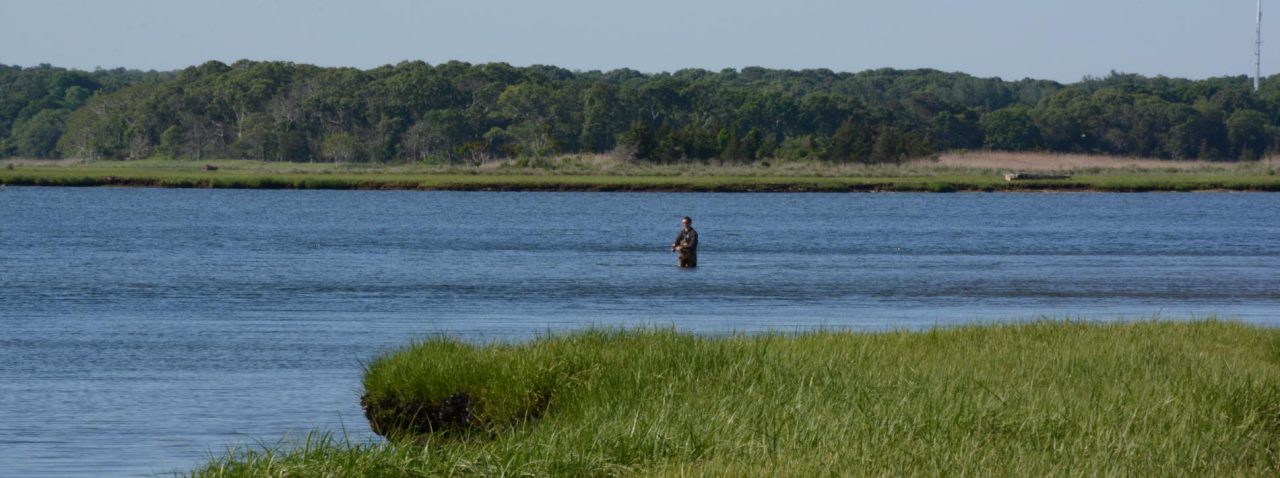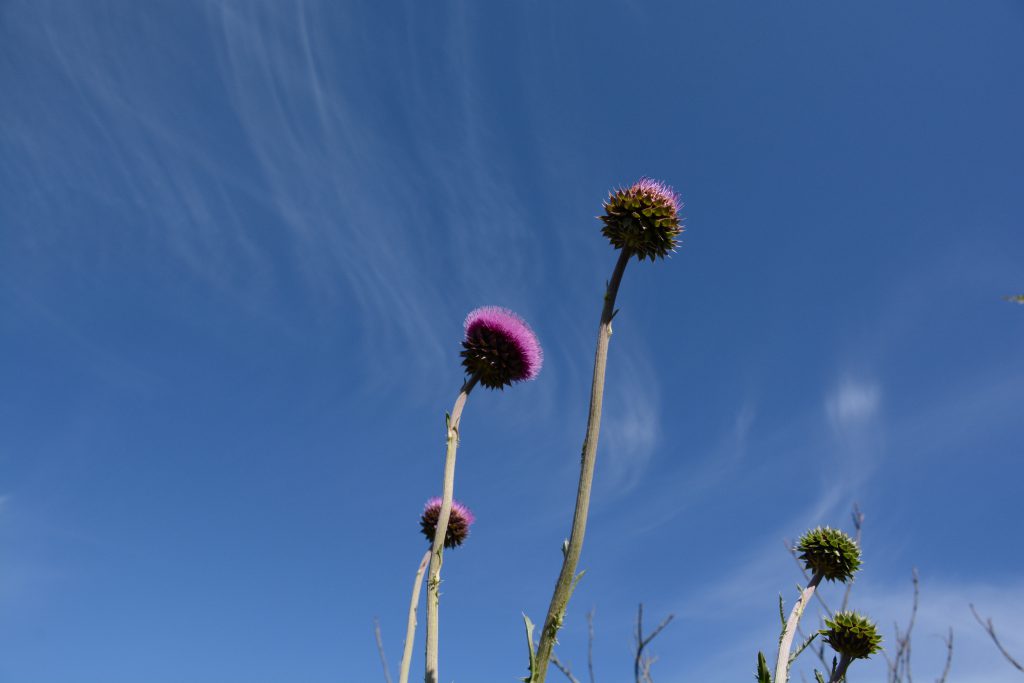Part 1:
Dead moss bunkers also called Menhaden on a small stony beach on the Peconic River Estuary. Three men, a truck and trailer, and a boat full to the brim. They arrived at 4:30AM from Eastport to catch Menhaden, thousands of bunker to sell them in Huntington.
They set a 150 long seine net using the boat. Huge schools of Menhaden had assembled there as they have done for thousands of years. The fishermen knew this. They have a very small window of opportunity.
Using the boat, they surround the fish, slowly pull the net in so that the fish fall into the boat. When I arrived, one man shoveled fish into plastic milk containers, the second lifted it, and the third man, up on the truck, poured the fish into a large vat with some water in it. It was low tide, less room for the fish, a better situation than at high tide.
Blue fish and striped bass feed on bunker. The Bunker try to escape. They try to escape and head up the creeks, run out of oxygen and die. Bunkers are filter feeders and have mouths and gills adapted to catching tiny plankton. There is a plankton spike in June. Bunker are oily, inedible but not for gulls.
Once the bunker reach Huntington, they are turned into chum in five gallon buckets and frozen. Shark fishermen depend on oily bunker to attract sharks, catch sharks, and kill sharks. I asked for a dead bunker to take home to photograph, sketch, and…make ink prints.
Part 2: Mark and I agreed to meet where the three fisherman were catching bunkers. He took photos and thought I would like to see it and I did. Now we drove to Indian Island to take the four mile hike has taken several times.
Much of the trail edges Great Peconic Bay. With low tide and early morning sunshine, we had a perfect walking opportunity. The sand was dotted with dead bunker. One had its flesh stripped by crabs , snails, and gulls. The ribs were exposed. Bunker are members of the herring family. An identifying mark is a black splotch above the gill.on either side. They have a small dorsal fin, forked tail, and a strange mouth configuration. Bunker are not predators. They are herbivores and seine plankton from the water with structures called gill rakes. They feed like baleen whales.
A recent storm was evident from the erosion of sand that revealed a layer of peat. A healthy mat of cord grass grew on top of the peat and created it. It is possible to measure the thickness of peat deposits and infer the time it took for them to form. Each year, a new, thin layer of peat is formed from the decay of cord grass roots.
I found a block of peat marooned on the beach slope and stopped to examine it. It tells me that there was some serious wave action here strong enough for waves to rip this block off the substrate. The peat block was waterlogged and loaded with ribbed mussels. These mussels feed on the same thing as the menhaden, namely plankton. The spring bloom of plankton started in late March and is almost over. Another bloom starts in October. Near by, I saw a dead bunker covered with mud snails.
I marveled at the clouds overhead. Out on the beach, the sky opens up. I saw beautiful patters of cirrus clouds that looked like bunker ribs.
Another sign of a very strong storm was a large beach plum with parallel roots exposed. I estimated that six feet of sand was washed away at this spot.
Our trail changed to the salt marsh. I felt a slight bounce from the peat mat below me. We sloshed through tidal pools that were trapped in hollow’s. Mark pointed out a duck blind way in the distance. Our trail meandered along the shore around coves. It is obvious why Peconic Bay is “Great” I scanned the horizon and marveled at the shimmering sunlight on the water.
Mark pointed out a school of bunker at the mouth of Meeting House Creek. The surface of the water churned with silvery flashes of jumping fish. I heard and saw them jumping. Mark took photographs crouched at the water’s edge. Perhaps the school was waiting for the tide to change.
Our trail led into the woods. A startled deer leaped with such extraordinary grace that it looked like gravity was suspended. Huge, high vaults and at their apex, front and hind legs were outstretched.
We arrived at the duck blind. “This would be an ideal place to take a nap.’ Mark quipped. He spotted an Eastern Kingbird perched on a high branch. This bird is a fly catcher and after catching an insect, immediately returns to the same perch.
We came acrosss an escaping garter snake that was sunning on the trail and we came upon an amazing group of prickly Bull Thistles with large purple flowers.
I’m coming back because the battery of my camera died after three shots of the men unloading the bunker.
Tom Stock
Photos for this piece courtesy of Mark Harrington



George Wallace
Speaking of Menhaden, I recall Pete Ames, a third generation fishing rod maker from Little Neck who made hundreds of fishing rods for sport fishermen on Long Island over the years (menhaden was his main source of bait). When I interviewed him in 2004 he was one of a very few traditional rod makers left on Long Island, a craft that he learned from his father and grandfather as a young boy.
Pete started as 5-year old, using a simple string and a hook. There were boatyards at the end of the Little Neck Parkway, and people took him out on their boats because he ‘gravitated to water and his father and grandfather were fishermen. He used to go fishing in Patchogue back in the 50s and his earliest memories were fishing on Peterson’s Cove with a drop line.
Back in the day, you could fish all day for flounder without the use of chum. There were great runs of fluke and weakfish. Flounder fishing began in the middle of March. In April it was stripped bass. Fluke was after the weakfish run in May. In June it was time for the bluefish to make their run.
From the age of eight, Pete began fishing on his own, using fishing rods made by his father and grandfather, as well as new ones manufactured elsewhere. But it was a 35-pound striper that turned ten year old Pete Ames into a fishing rod maker. “My father bought me one of the first Japanese-made spinning rods that came into this country,” he told me. Like a good little 10-year old he went off to Little Neck Bay, baited it with a bloodworm and immediately landed a striper that fought him so hard the rod was bent in half.
“I just watched the line peel off the reel for about 25 minutes. I finally brought in this 35-pound stripped bass, but it broke the reel.”
Pete’s father went out the next Saturday and bought him another one. and the young ten-year old got to work on it. “I stripped down a Japanese rod and rewrapped it with some new guides,” he laughed. “Dad thought it was a new rod.”
That was the day Pete Ames realized he was destined to follow in the footsteps of his father and grandfather before him, and take his place as a master fishing rod maker for Long Island sports fishermen.
tom stock
George,
You’ve made a valuable contribution here with a story that others who visit can read a paperless read…where’s my pen?
tom
tom stock
Mark Harrington’s photos are a prelude for what will come. We are thinking of publishing on paper. Thank you Mark for adding exciting visuals to my words. Let’s keep doing this…something is evolving
tom